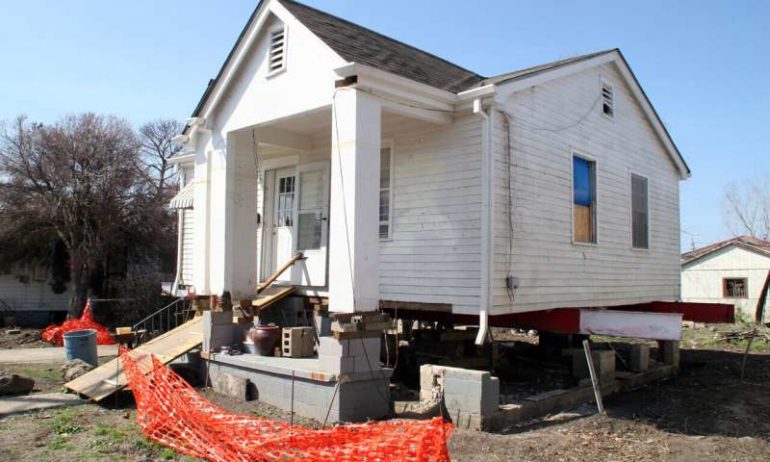What do you have on your 2020 Bingo Card? Wildfire, heat wave, global pandemic, or flooding? If it’s flooding, then it’s a good bet it will happen in many places in the U.S. sometime during the year.
People who live in areas designated as river flood zones often seek to raise their homes. Now a team of Penn State researchers suggests that considering uncertainties can improve decisions.
“Many houses located along rivers in Pennsylvania are in danger of being flooded,” said Klaus Keller, professor of geosciences. “Some houses are elevated high, some to intermediate levels, and some not at all. Why is this?”
People in river flood zones are looking for good strategies on how high to elevate their houses. The Federal Emergency Management Agency—FEMA—recommends elevating houses to the height of a flood that has a 1% chance to occur in a given year, also known as the 100-year flood, plus at least one foot. This is the minimum elevation for which federal funding may be available. The researchers investigated if they might improve on this suggested elevation given uncertainties surrounding, for example, future flooding, the future value of money and the vulnerability of a house to flooding. They reported their results today (Oct. 26) in Nature Communications.
“Looking at the range of possible outcomes can help to improve decisions on how high to elevate a house,” said Mahkameh Zarekarizi, former Penn State postdoctoral fellow, now a hydroclimate scientist at Jupiter Intelligence. “It is arguably better to fail in a computer model than in real life. In the computer, we can look at many possible future outcomes of flooding, costs and other uncertainties.”
Decision makers may want to reduce the probability of being flooded and reduce the net costs.
“The decision makers may benefit from a map that shows the trade-offs between these goals,” said Vivek Srikrishnan, assistant research professor, Earth and Environmental Systems Institute. “Home owners may want to see, for example, the total net price of reducing the risk of being flooded. A single recommendation such as the 100-year flood height plus at least one foot is silent on this question.”
Demographics data helps predict NY flood insurance claims
Provided by
Pennsylvania State University
Citation:
Uncertainties key to balancing flood risk and cost in elevating houses (2020, October 26)
retrieved 26 October 2020
from https://phys.org/news/2020-10-uncertainties-key-elevating-houses.html
This document is subject to copyright. Apart from any fair dealing for the purpose of private study or research, no
part may be reproduced without the written permission. The content is provided for information purposes only.



